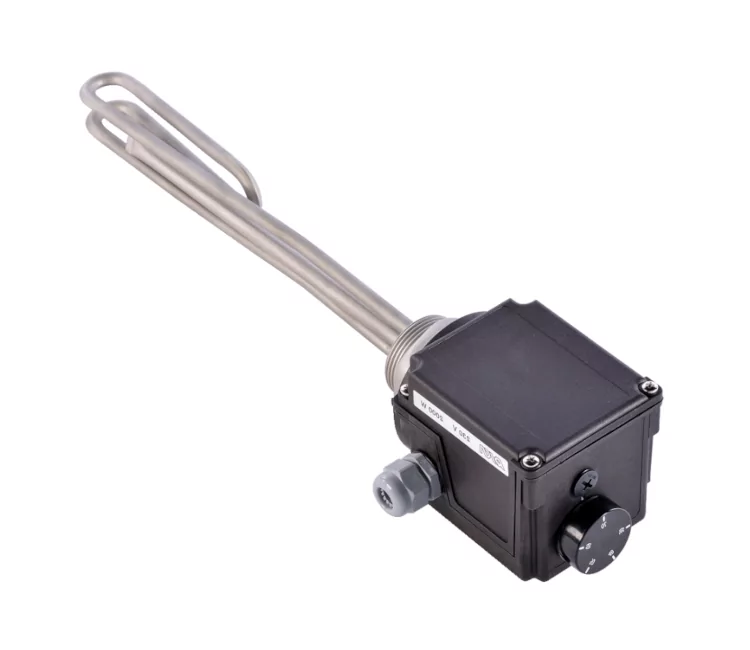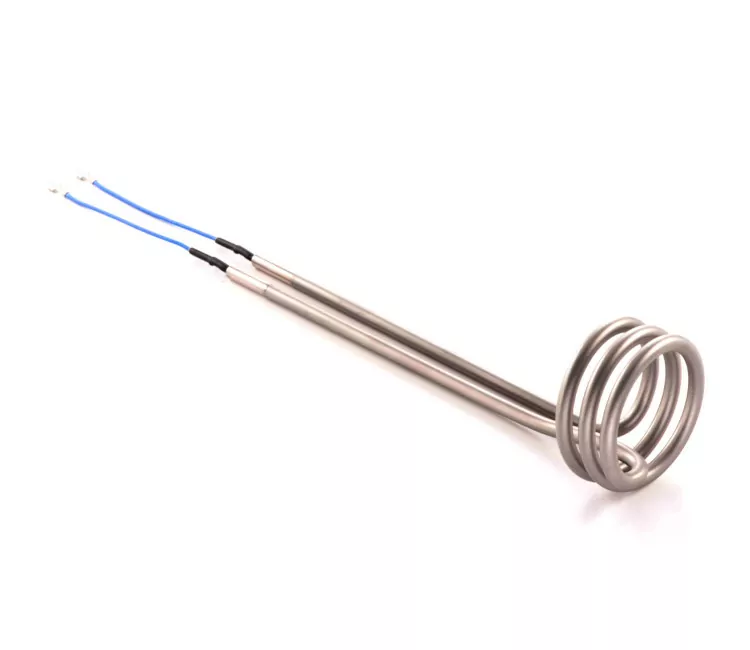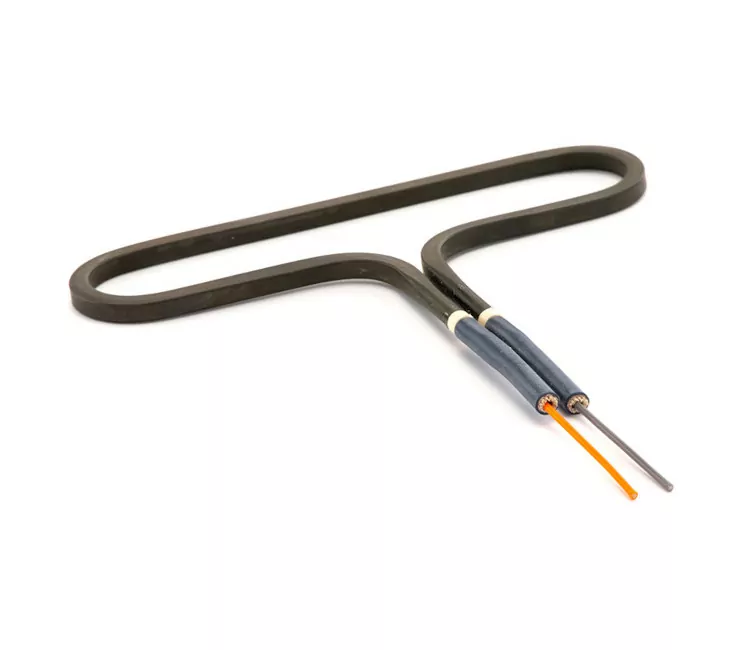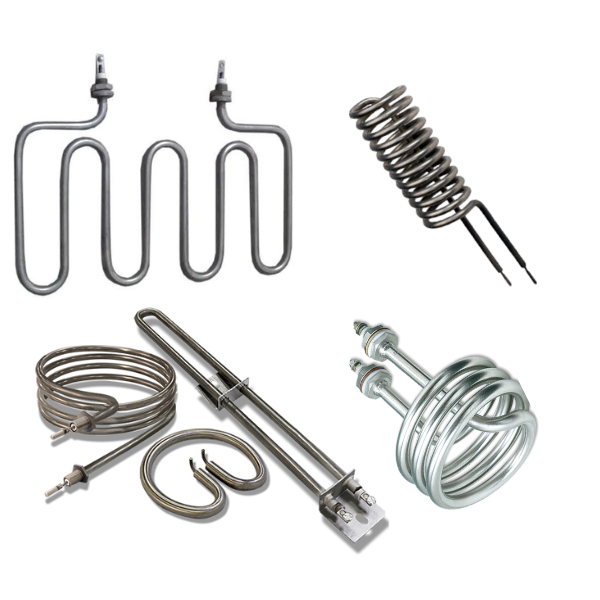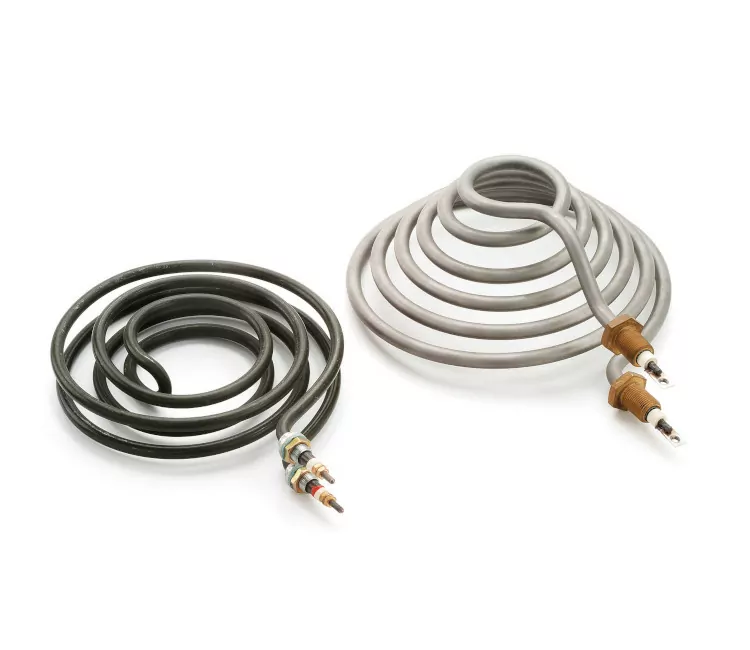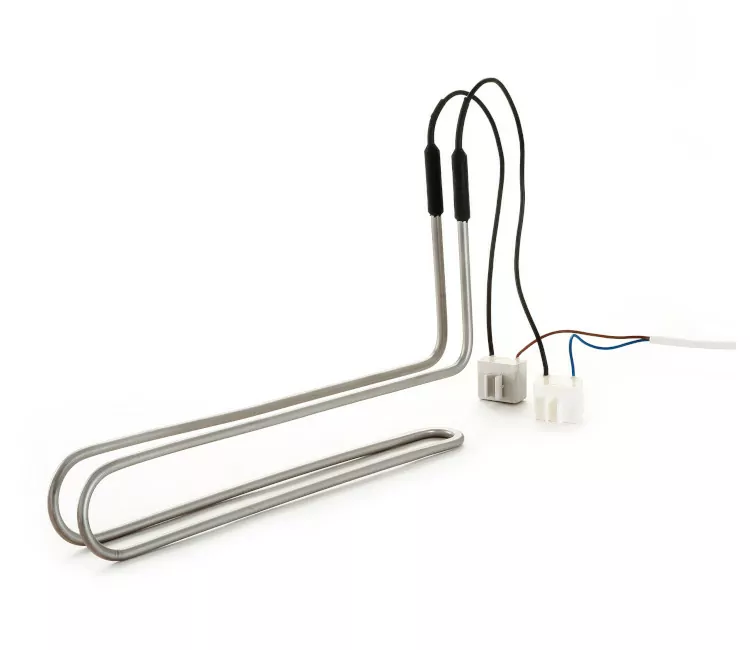Tubular Heater
Customizable/OEM
- Home
- »
- Tubular Heating Elements
Product Catalog
- Electric Heaters and Elements
- Immersion Heaters
- Cartridge Heaters
- Air Fryer Heating Element
- Band Heaters
- Casting in Heater
- Finned Heaters
- Flexible heaters
- Flexible heaters
- Immersion Heaters
- Tubular Heating Elements
- Silicon carbide heating elements
- ceramic heating element
- Flange Immersion Heater
- Oven Heating Elements
- Screw Plug Immersion Heater
- Circulation Heater
- Coffee Machine Heating Element
- Duct Heater
- Quartz Infrared Heater
- Water Heater Element
- Boiler Heaters
- Washing Machine Heater
- water heater
- heater strip
- Coil Heaters
- Magnesium oxide rod
- Infrared heater
- Deep fryer heater
- Teflon heater
- Heating Cable
- Plate heat exchanger
- Industrial Oven
- UV Curing Machine
- Water Heater Manufacturers

Tubular Heater
ELEKHEAT offers high-quality cartridge tubular heaters engineered for efficient and reliable heat transfer, catering to diverse industrial and commercial heating applications.
Tubular heating elements use resistive wire encased in materials like stainless steel, Incoloy, or copper for durability and uniform heating. Customizable in size, shape, and wattage, they suit applications like HVAC systems, process heating, and industrial equipment.
Tubular Heater Applications
1. Industrial Processing
- Chemical reactors and tanks
- Process water heating
- Oil refining and pre-heating
- Acid and alkali baths
- Electroplating and anodizing tanks
- Plastic and rubber manufacturing (extruders, injection molding machines)
- Textile processing machines
2. Food and Beverage
- Brewing systems
- Cooking and boiling equipment (e.g., kettles, fryers)
- Pasteurization systems
- Clean-in-Place (CIP) systems
- Industrial ovens and bakery equipment
- Dairy processing tanks
3. Energy and Power
- Boiler heating elements
- Renewable energy systems (solar water heaters, thermal storage)
- Thermal oil heating for power plants
- Fuel pre-heating for turbines and engines
- Battery pack heaters for renewable energy storage
4. HVAC and Commercial Equipment
- Radiant heating panels
- Air handling units
- Dehumidifiers and humidifiers
- Industrial and commercial dryers
5. Oil and Gas
- Pipeline heating
- Tank and vessel heating for storage
- Offshore equipment heating
6. Medical and Laboratory
- Sterilization equipment
- Autoclaves
- Laboratory water baths
- Incubators
7. Aerospace and Transportation
- Aircraft cabin heaters
- Engine pre-heaters
- Fuel tank heating for aviation and marine applications
8. Residential and Commercial Appliances
- Electric ovens and ranges
- Dishwashers and washing machines
- Water heaters and geysers
Product Lines

Formed Tubular Heating Elements

ELEKHEAT’s Formed Tubular Heating Elements are custom-shaped heating solutions, designed to meet specific equipment requirements with configurations such as U-shape, W-shape, or serpentine, ensuring precision and versatility for industrial and appliance applications.
Finned Tubular Heating Elements

Flanged Tubular Heating Elements

Explosion-Proof Tubular Heaters

Our Customization Options
Contact Elekheat today by dialing 008618914757574 or use our contact form ,We are happy to answer any questions. Elekheat is your best partner for heating element solutions!
Why Choose ELEKHEAT Tubular Heating Elements?
1.Over 20 Years of Expertise: Since 1997, ELEKHEAT has delivered advanced heating solutions, meeting diverse industrial and commercial needs.
2.Cutting-Edge Equipment: Our facilities feature precision CNC machines, laser welding, and automated systems for consistent quality.
3.Certified Excellence: Our products comply with strict international standards like CL, UL, CSA, and ISO, backed by rigorous in-house quality testing for unmatched durability and performance.
4.Tailored to Your Specifications: From U-shapes and coils to intricate 3D geometries, our tubular heating elements are custom-designed to meet your exact requirements. We offer options for power, voltage, length, sheath materials, and termination styles.
5.Commitment to Innovation and Quality: With a focus on research and development, ELEKHEAT continuously improves its processes and products.
Tubular Heating Elements: General Specifications
| Specification | Details |
|---|---|
| Sheath Materials | Stainless Steel (AISI 304, AISI 316, AISI 321), Incoloy®, Copper, Titanium, Mild Steel |
| Insulation Materials | Magnesium Oxide (MgO) powder, Ceramic |
| Diameter | 0.260″ to 0.496″ (custom sizes available) |
| Length | Up to 335″ (depending on diameter) |
| Voltage Range | 120V, 240V, 480V (custom voltage options available) |
| Power Range | 100W to 50kW |
| Watt Density | – Low (<5 W/in²): Sensitive applications – Medium (5–15 W/in²): General-purpose – High (>15 W/in²): Industrial use |
| End Terminations | Threaded Studs, Screw Lugs, Quick Disconnect Spades, Ceramic-to-metal hermetic seals, flexible lead wire extensions |
| Certifications | UL, CSA, CE certifications available |
| Temperature Range | – Standard: -50°F to 1200°F – High-temperature alloys: up to 2200°F |
| Customization | Available in U-shaped, coil, spiral, and other custom 3D shapes |
Have a Question?
At ELEKHEAT, we’re here to provide the answers you need. Whether you’re looking for product information, technical specifications, or need assistance with maintenance, our team of experts is ready to help. Don’t hesitate to reach out—we’re committed to ensuring you get the support you need for the best heating solutions.
- Selection Guide
- Installation Guide
- Resource Center
Key Considerations for Selecting Tubular Heating Elements
Material Compatibility
Choose sheath materials based on the environment and heating fluid. Stainless steel is common for general use, while Incoloy and Inconel are better for high temperatures or corrosive liquids.Power and Size Requirements
Select the correct wattage and size based on the heating need. Low watt densities for gentle heating and high densities for rapid heat transfer.
Additional Considerations
Design and Shape
Ensure the element fits your space. Options include straight, U-shaped, or coiled designs based on application and space constraints.Termination Options
Choose the correct termination for easy installation. Options include threaded studs, screw lugs, and flexible lead wires. Make sure it’s compatible with your system.
Detailed Specifications by Material
| Material | Max Operating Temperature | Resistance to Corrosion | Common Applications |
|---|---|---|---|
| Stainless Steel | 1200°F | Moderate (not suitable for extreme chemicals) | - Water heating - Food processing - General industrial uses |
| Incoloy 800 | 1500°F | High (excellent against acidic or oxidizing agents) | - Oil heating - High-temperature applications |
| Incoloy 825 | 1400°F | Very high (ideal for seawater and acidic environments) | - Chemical processing - Marine heating solutions |
| Copper | 400°F | Low (prone to corrosion in aggressive chemicals) | - Residential water heating - Low-cost applications |
| Titanium | 900°F | Excellent (resistant to seawater and chlorine) | - Desalination plants - High-saline environments |
Termination Specifications for Tubular Heating Elements
| Specification | Threaded Studs | Screw Lugs | Quick Disconnect Spades | Flexible Leads | Ceramic-to-Metal Seals | Flanged Terminations |
|---|---|---|---|---|---|---|
| Material | Stainless Steel, Copper, Brass | Stainless Steel, Brass | Copper, Brass, Stainless Steel | Silicone, PVC, Teflon | Ceramic, Stainless Steel | Stainless Steel, Incoloy |
| Voltage Rating | Up to 600V | Up to 600V | Up to 600V | Up to 600V | Up to 600V | Up to 600V |
| Current Rating | High current capacity | Medium current capacity | Medium current capacity | Low to medium current | High current capacity | High current capacity |
| Size Range | M4 to M12 (common sizes) | M4 to M12 (common sizes) | 6-10mm spade connector | 1mm to 10mm | Custom sizes based on design | Custom sizes based on design |
| Max Power Rating | Up to 10 kW | Up to 10 kW | Up to 10 kW | Up to 5 kW | Up to 10 kW | Up to 20 kW |
| Temperature Range | -50°C to 500°C | -50°C to 500°C | -50°C to 500°C | -40°C to 200°C | -50°C to 500°C | -50°C to 500°C |
| Applications | Industrial systems, high power equipment | Domestic water heaters, small industrial | Testing systems, portable heaters | Custom industrial, small devices | High-voltage, hazardous environments | Boilers, chemical processing, industrial |
| Ease of Installation | Easy to screw in | Easy to connect with wire | Fast disconnect for maintenance | Requires proper insulation, easy to wire | Requires specialized installation | Easy to mount, flange with bolts |
Proper installation of tubular heating elements is crucial for their efficient performance and longevity. Follow these step-by-step instructions to ensure safe and optimal operation.
1. Pre-Installation Preparation
Inspect the Heating Element:
Before installation, check the heating element for any physical damage. Ensure the sheath is intact and that there are no visible cracks or breaks. Inspect the lead wires for signs of wear or fraying.
Clean the Installation Surface:
Make sure the surface where the heating element will be mounted is clean, dry, and free from dirt, grease, or other contaminants that could interfere with adhesion or heat transfer. For best results, use a cleaning solvent like isopropyl alcohol.
Verify Compatibility:
Confirm that the heater’s specifications, including voltage, wattage, and dimensions, match the requirements of your application. This will prevent overheating or inadequate heating performance.
2. Mounting and Positioning
Select the Correct Installation Location:
Ensure that the heating element is positioned correctly. If it’s an immersion heater, make sure it is fully submerged in the liquid for efficient heat transfer. For air heating applications, ensure that the element has adequate space around it for air circulation.
Mount the Element:
For flanged heaters, align the flange with the tank opening and secure it using bolts or screws. For threaded heaters, ensure the threads are properly aligned with the mounting holes in the pipe or tank and tightened securely to prevent leaks.
Proper Submersion:
For immersion heaters, make sure the immersed length of the heater is adequate to fully heat the desired volume of liquid. Never operate an immersion heater without it being submerged, as this can cause the element to overheat and fail.
3. Electrical Connections
Check Power Supply:
Verify that the electrical specifications (voltage and current) of the heater match your power supply. Using a heater with incompatible voltage can cause inefficiency or failure.
Connect Lead Wires:
Carefully attach the lead wires to the terminal block or power source, ensuring secure and insulated connections. If using a thermostat or controller, connect the heater to the system according to the manufacturer's instructions.
Grounding:
Proper grounding is essential to avoid electrical hazards. Ensure that the heater is grounded properly to protect against electrical shocks and short circuits.
4. Testing the System
Test Electrical Connections:
After wiring the heater, perform a low-power test to check for correct operation. This ensures that the heater is wired properly and that there are no electrical issues before full operation.
Calibrate Temperature Control:
If your system includes a thermostat or external controller, make sure it is properly calibrated to regulate the temperature within the desired range. Set the thermostat to the correct temperature to prevent overheating and maintain efficiency.
5. Safety Precautions and Maintenance
Safety During Installation:
Always follow safety guidelines when handling electrical components. Turn off the power supply before beginning installation to prevent electrical shock.
Regular Inspection:
After installation, regularly check the heating element for signs of wear or damage. Ensure that the heating surface remains clean, as buildup can reduce heat transfer efficiency.
Maintain the Heater:
If you are using the heater in a harsh environment (e.g., chemicals or high temperatures), inspect it periodically for corrosion or damage. Clean the heater using a soft cloth or mild detergent to maintain its performance.
Following these steps ensures that your tubular heating element operates efficiently and safely. For assistance with custom configurations or specific applications, feel free to contact ELEKHEAT.
Welcome to Elekheat Resource Center, your one-stop destination for comprehensive technical documentation and industry insights. Designed to support professionals across various sectors, our resource hub provides access to valuable information.

